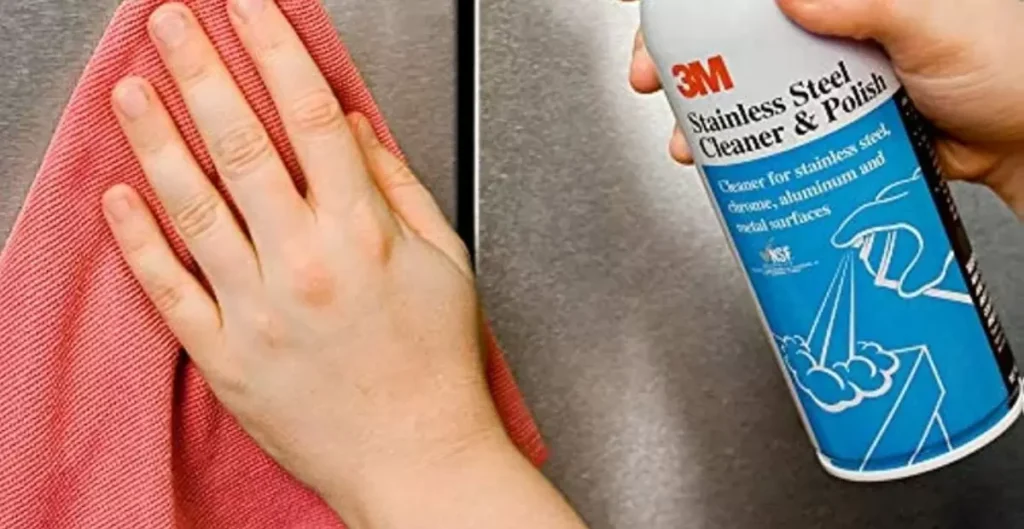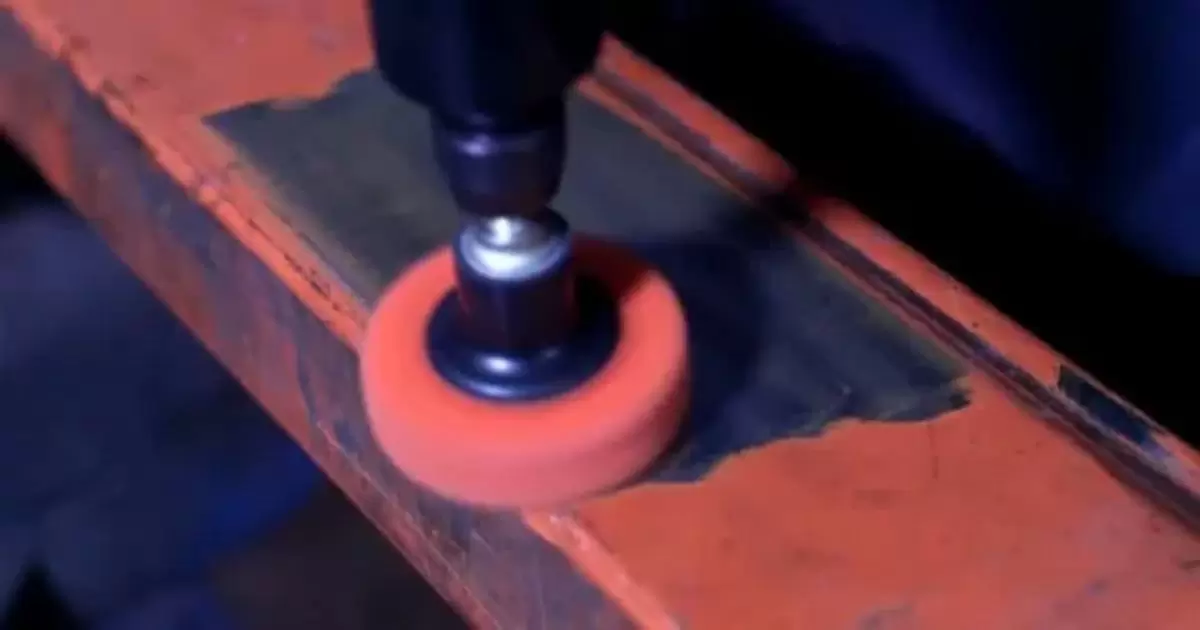Paint removal involves the process of eliminating paint from various surfaces. This can be necessary for a multitude of reasons, such as preparing a surface for repainting, restoring the original appearance of an object, or addressing accidental paint spills.
The common question is a puzzle many individuals face when dealing with painted stainless steel surfaces. What removes paint from stainless steel? Whether you have accidentally splattered paint on your stainless steel appliances.
Removal of paint from stainless steel requires careful consideration of the paint type and the stainless steel grade. Abrasive methods, such as sanding or scraping, may be suitable for certain situations, while chemical paint strippers formulated for stainless steel can also be effective.
What Removes Paint from Stainless Steel
Paint removal from stainless steel involves employing various methods depending on the type of paint and the stainless steel grade. Abrasive techniques such as sanding and scraping are effective for mechanical removal, requiring careful attention to avoid damaging the metal surface.
Chemical solutions, like specialized paint strippers formulated for stainless steel, play a crucial role in dissolving and lifting the paint layer without harming the underlying metal. The choice of method depends on factors such as the thickness of the paint, the type of stainless steel, and the desired finish.
The Nature of Paint on Stainless Steel
Understanding the nature of paint on stainless steel surfaces is essential for successful removal. Paint can vary in composition, with some being water-based, oil-based, or epoxy. Water-based paints are generally easier to remove, while oil-based and epoxy paints may require more robust techniques.
The adhesion of paint to stainless steel is influenced by factors like surface cleanliness and the presence of contaminants. Thoroughly comprehending the specific paint characteristics on stainless steel helps determine whether abrasive methods or chemical solutions are more suitable.
Types of Paint on Stainless Steel Surfaces
Understanding the various types of paint that may cling to stainless steel surfaces is crucial for effective removal. Paints can be broadly categorized into:
1-Water-based
2-Oil-based
3-Enamel paints
Each adhering differently to stainless steel. Water-based paints are often easier to remove, requiring less aggressive methods. On the other hand, oil-based paints may demand more robust approaches due to their durable nature.
Enamel paints, known for their glossy finish, can pose a challenge as well. Identifying the specific paint type is the initial step towards choosing the most suitable removal method, ensuring a successful outcome without compromising the stainless steel underneath.
Matching Paint Removal Methods to Stainless Steel Grades
The type of stainless steel plays a pivotal role in determining the appropriate paint removal method. Different grades of stainless steel, such as 304, 316, or 430, possess distinct characteristics and reactions to various chemicals and abrasives. Abrasive techniques like sanding or scraping may be effective for some grades.
They could lead to scratches on more delicate alloys. Chemical paint strippers designed for stainless steel offer a gentler alternative. The compatibility with specific grades should be considered. Tailoring the removal method to the stainless steel grade ensures not only the efficient elimination of paint.
Abrasive Techniques For Removing Paint from Stainless Steel
When dealing with removes paint from stainless steel, abrasive techniques provide a hands-on approach to eliminate unwanted paint layers. Sanding and scraping are effective mechanical methods that involve using abrasive materials or tools to physically remove the paint. Sandpaper with varying grits can be employed to smooth out the painted surface gradually.
This method is suitable for smaller areas or detailed sections where precision is crucial. Scraping involves using tools like putty knives or paint scrapers to lift and peel off the paint layer. It is particularly effective when dealing with thicker paint coatings. While using abrasive techniques, it’s important to proceed with caution to avoid scratching or damaging the underlying stainless steel.
Chemical Solutions for Paint Removes from Stainless Steel

Chemical paint strippers offer an alternative approach to removes paint from stainless steel surfaces. These solutions contain chemicals that break down the molecular structure of the paint, making it easier to wipe or peel away. When using a chemical paint stripper for stainless steel, it’s crucial to choose a product specifically formulated for this metal to avoid any adverse reactions.
Application typically involves brushing or spraying the chemical onto the painted surface and allowing it to sit for a specified period. The softened paint can then be gently wiped or scraped away. Chemical solutions are particularly useful for intricate designs or areas where mechanical abrasion might be challenging.
Importance of Proper Surface Preparation
Proper surface preparation is a critical first step in the process of removes paint from stainless steel. Before diving into any paint removal method, ensuring that the surface is clean and ready is essential for optimal results. This involves removing any dirt, grease, or debris that may hinder the effectiveness of the chosen paint removal technique.
Whether utilizing abrasive methods like sanding or chemical solutions, a well-prepared surface allows for better adhesion of the removal agents, facilitating a smoother and more efficient process. By taking the time to prepare the stainless steel surface adequately, individuals can enhance the success of their paint removal efforts and contribute to achieving a polished and pristine finish.
Safeguarding Stainless Steel Through Preventing Scratches and Corrosion
As much as removing paint is the goal, safeguarding the integrity of the stainless steel during the process is equally important. Scratches and corrosion can mar the sleek appearance of stainless steel, compromising both its aesthetics and functionality. Utilizing abrasive techniques like sanding requires a delicate touch to avoid inadvertently scratching the surface.
Choosing chemical paint strippers that are specifically formulated for stainless steel helps prevent corrosive reactions that could compromise the metal’s corrosion-resistant properties. By adopting careful and considerate approaches. Individuals can successfully remove paint from stainless steel while ensuring that the material remains unscathed.
Essential Equipment for Successful Paint Removal
Effective removes paint from stainless steel necessitates the use of essential tools to ensure a smooth and damage-free process. Sandpaper with varying grits is a fundamental component, offering versatility in tackling different paint types and thicknesses. Coarse grits help initiate the removal process, while finer grits contribute to a polished finish.
Utensils with stainless steel benefit from ergonomic scrapers, ensuring controlled pressure without surface harm. Meanwhile, specialized chemical paint strippers designed for stainless steel effectively break down layers, preserving the metal’s integrity. Elevate your kitchen experience with these thoughtful tools.
Table: Essential Tools for Paint Removal from Stainless Steel
| Tool | Purpose |
| Sandpaper (Various Grits) | Initiates and refines paint removal |
| Scraper | Controls pressure during scraping |
| Chemical Paint Strippers | Breaks down paint layers without metal damage |
| Soft-Bristle Brushes | Reaches intricate areas for effective cleaning |
| Fine Steel Wool | Refines surface and enhances stainless steel |
| Buffing Compounds | Adds shine and protective layer |
| Cotton Swabs | Precision in removing paint from tight spaces |
Achieving Luster and Durability: Successful Paint Removes from Stainless Steel
The ultimate goal of removes paint from stainless steel is not just eliminating unwanted layers but also restoring the luster and durability of the metal. After the initial removal using sanding or scraping, employing a fine steel wool can further refine the surface, eliminating any remaining paint residue and enhancing the stainless steel’s sheen.
Buffing compounds, specifically designed for stainless steel, add the finishing touch, providing a brilliant shine and a protective layer against potential corrosion. For intricate designs or tight spaces, cotton swabs dipped in a mild solvent can be employed, ensuring precision without compromising the surrounding areas.
FAQs
What methods can I use to remove paint from stainless steel surfaces?
Explore abrasive approaches like sanding and scraping with varying grits of sandpaper, or opt for chemical paint strippers designed for stainless steel.
Are there specific tools I need for successful paint removal from stainless steel?
Essential tools include sandpaper (with varying grits), scrapers, chemical paint strippers, soft-bristle brushes, fine steel wool, buffing compounds, and cotton swabs for precision.
How can I restore the luster of stainless steel after paint removal?
Achieve a polished finish by using fine steel wool to refine the surface. Buffing compounds designed for stainless steel add shine and provide a protective layer.
Conclusion
In the journey to uncover what removes paint from stainless steel, we’ve discovered a range of effective methods and essential tools. From the simplicity of sandpaper and scrapers to the specialized power of chemical paint strippers, each approach has its role in restoring stainless steel surfaces to their original gleam.
As we wrap up our exploration, remember that achieving luster and durability after paint removal involves more than just stripping away layers. With fine steel wool, buffing compounds, and a touch of precision using cotton swabs, you can transform a once-painted stainless steel surface into a radiant and resilient showcase.
